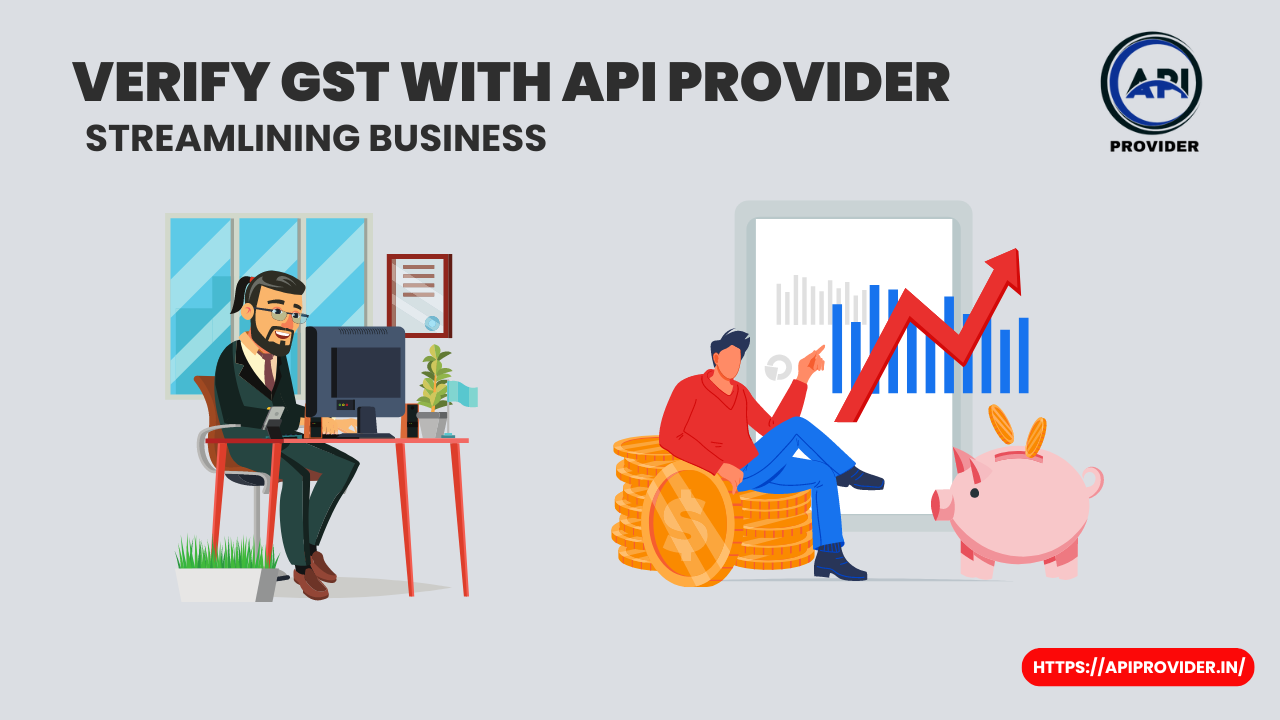Operations
Goods and Services Tax (GST) is a comprehensive indirect tax levied on the manufacture, sale, and consumption of goods and services across India. It has significantly transformed the Indian taxation system, replacing multiple indirect taxes with a unified tax structure. For businesses, maintaining compliance with GST regulations is crucial, and verifying GST details is a critical part of this process. With advancements in technology, businesses can now leverage APIs (Application Programming Interfaces) to simplify and automate GST verification, ensuring accuracy and efficiency.

What is GST Verification?
GST verification involves confirming the authenticity and validity of a GSTIN (GST Identification Number). This process helps businesses ensure that their suppliers and vendors are GST-compliant, thereby safeguarding against potential legal and financial repercussions. Traditionally, this verification was a manual process, prone to errors and time-consuming. However, with API providers, GST verification has become more streamlined and reliable.
Read More…..
- How Banking UPI Services Impact Various Business Industries?
- How Payment APIs Help in Providing Payment Solutions
The Role of API Providers in GST Verification
API providers offer a seamless way to integrate GST verification into business systems. These providers offer APIs that businesses can use to verify GST details in real-time, directly from the GSTN (Goods and Services Tax Network) database. Here are some key benefits of using API providers for GST verification:
1. Automation and Efficiency
APIs automate the GST verification process, eliminating the need for manual checks. This automation reduces the time and effort required, allowing businesses to focus on core activities. By integrating GST verification APIs into their systems, businesses can verify multiple GSTINs simultaneously, enhancing operational efficiency.
2. Accuracy and Reliability
Manual verification processes are prone to errors, which can lead to compliance issues and financial losses. GST verification APIs access real-time data from the GSTN database, ensuring accuracy and reliability. This minimizes the risk of errors and ensures that businesses are always compliant with the latest GST regulations.
3. Real-Time Verification
One of the significant advantages of using GST verification APIs is real-time verification. Businesses can instantly verify the GST details of their suppliers and vendors, enabling quick decision-making. This real-time capability is particularly beneficial for large enterprises with numerous transactions, where timely verification is crucial.
4. Scalability
API providers offer scalable solutions that can handle a high volume of GST verifications. Whether a business needs to verify a few GSTINs or thousands, APIs can scale to meet the demand without compromising performance. This scalability is essential for growing businesses that need to maintain compliance as their operations expand.
5. Cost-Effectiveness
Outsourcing GST verification to API providers can be cost-effective compared to developing and maintaining in-house verification systems. Businesses can save on development costs, infrastructure, and ongoing maintenance by leveraging the expertise of API providers. This cost-saving can be redirected to other critical business areas.
How to Integrate GST Verification APIs
Integrating GST verification APIs into business systems is a straightforward process. Here are the steps involved:
- Choose a Reliable API Provider: Select an API provider that offers comprehensive GST verification services. Evaluate their features, pricing, and customer support to ensure they meet your business needs.
- API Documentation: Obtain the API documentation from the provider. This documentation includes detailed instructions on how to integrate the API into your system.
- API Key and Authentication: Register with the API provider to obtain an API key. This key is essential for authenticating your API requests.
- Integration: Use the API documentation to integrate the GST verification API into your existing systems. This may involve working with your IT team or software developers.
- Testing: Before going live, thoroughly test the API integration to ensure it works seamlessly and accurately verifies GST details.
- Go Live: Once testing is successful, deploy the API integration into your production environment.
Conclusion
GST verification is a critical aspect of maintaining compliance and ensuring smooth business operations. By leveraging API providers for GST verification, businesses can automate the process, enhance accuracy, and achieve real-time verification. This not only saves time and costs but also mitigates the risk of compliance issues. As the business landscape continues to evolve, integrating GST verification APIs will be a strategic move for businesses aiming to stay ahead in the competitive market
